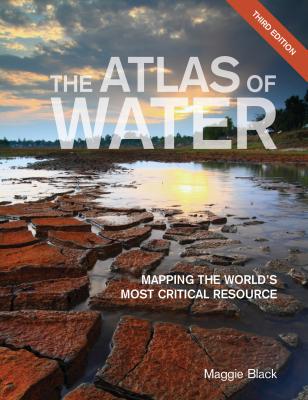ТОП просматриваемых книг сайта:
The Atlas of Water. Maggie Black
Читать онлайн.Название The Atlas of Water
Год выпуска 0
isbn 9780520965607
Автор произведения Maggie Black
Жанр Биология
Издательство Ingram
Bolivia–Chile
The waters of the Silala spring, Bolivia, flow through a canal westwards into Chile, where they are vital to the processing of copper in the Atacama desert. A disagreement over the natural course of this water prior to the construction of the canal in 1908 is part of a long-running territorial dispute. Bolivia claims that the water in the Silala Aquifer is its national property, the artificial canal is not governed by international water law, and Chile should pay Bolivia around $15,000 a day for the water. A draft bilateral agreement was rejected by Bolivia in 2010.
Q 4 Rising Demand; 5 Dwindling Supply
30
ISIL in Iraq
ISIL recognizes the importance of controlling vital infrastructure in the battle to establish territorial control. In 2014 it temporarily closed the gates of the Fallujah Dam on the Euphrates, flooding farmland in an attempt to create a protective barrier for its forces, and also reducing the water supply to downstream, mainly Shiite, cities. It adopted a similar tactic in June 2015 in Ramadi. The brief control by ISIL of the huge Mosul Dam on the Tigris in August 2014 was a grave cause for concern. But although capturing dams gives ISIL a degree of power, in reality managing vast volumes of continually renewing water in a way that does not adversely impact on ISIL-controlled territory is a challenge.
Kaveri River, India
Karnataka and Tamil Nadu States are obliged to share the waters of the Kaveri River. After a 50-year agreement ended in 1974, upstream Karnataka ceased its unwilling co-operation. Tamil Nadu’s agricultural production depends on large-volume releases, but in a drought year, farmers in Karnataka become desperate and resolutely oppose the loss of “their” water. The government of India has stepped in on many occasions, setting up a dispute tribunal. But its “final” awards – most recently in 2013 – are invariably rejected by one state or both. Tensions can lead to disruptive violence.
Central Asia
The fertile areas of Central Asia are deserts made arable by an integrated system of dams and canals in the Syr Darya and Amu Darya basins, built in the Soviet era. Since then, management of the whole system has fractured – as have inter-state relations. The upstream states, Kyrgyzstan and Tajikistan, enjoy a water surplus, while Kazakhstan, Uzbekistan and Turkmenistan suffer, as the near-empty Aral Sea at the end of the rivers stands eloquent testimony. Infrastructure is dilapidated, and wasteful. Two new upstream dams proposed in 2012 ratcheted tensions further. Agreements are ignored and state leaders have so far proved immune to compromise.
Copyright © Myriad Editions
33 Treaties and Obligations; 34 Striving for Co-operation R
31
Environmental Security
Florida Everglades
Aquatic ecosystems make a vital contribution to environmental security. Wetlands – bogs, swamps and marshes – maintain the viability of freshwater systems. Without them, rivers flow too fast, lakes become overburdened with organic matter, and coastlines are eroded. Until recently, the essential services provided by freshwater ecosystems have been economically under-valued. Marshes detoxify wastewater, upland forests conserve water and soil and mangrove swamps protect the coastline from erosion and storm surges – problems worsening with climate change. The loss of wetlands has been extensive. Around half of those in industrialized countries were destroyed before their importance was understood. They used to be seen as sources of “swamp fevers” such as malaria, and unproductive wet deserts that should be drained for settlement or agriculture. Some have been inundated or dried up as a result of dams altering river flows; others have had their water diverted for irrigation. Despite some reclamation, wetlands are deteriorating faster than any other ecosystem. Their destruction has a devastating impact on those who live in them and off them. The freshwater fish in inland wetlands provide vital protein for millions of people in developing countries. Attempts have been made to estimate the economic value of wetlands, some of which earn income from tourism and recreational activities as well as providing environmental benefits. In many cases, their worth turns out to be higher than that of the drained land.
The 2,000 km2 of Florida’s swamps represent only a fraction of their original size. In 1947, their ecological value was recognized by the creation of the Everglades National Park, but revival of the ecosystem has been stalled by the Florida sugar industry and farmers. In 2008, the Florida state government showed its commitment to ecological repair with a landmark decision to buy the US Sugar Corporation for $1.75 billion and use its land to restore flows of water to the Everglades from Lake Okeechobee.
The importance of mangroves
Конец ознакомительного фрагмента.
Текст

